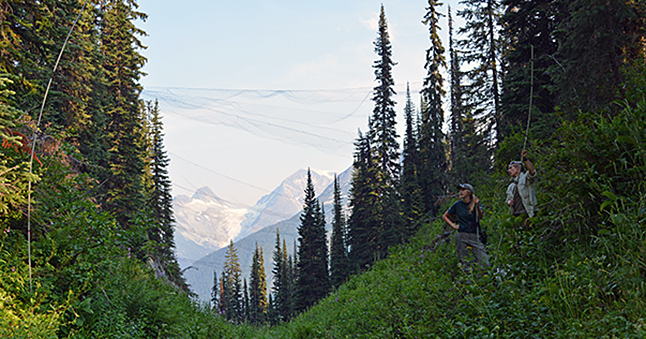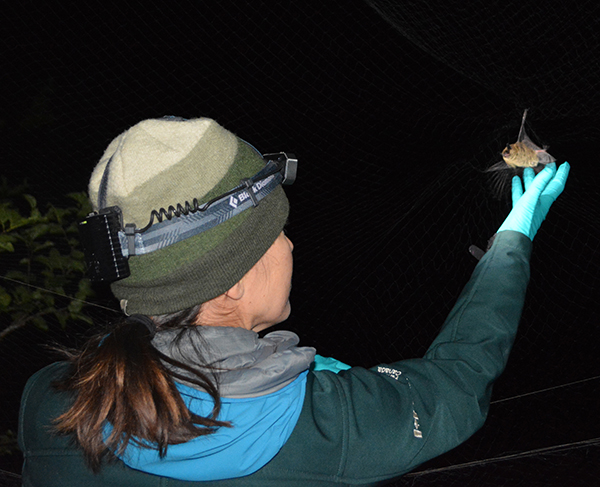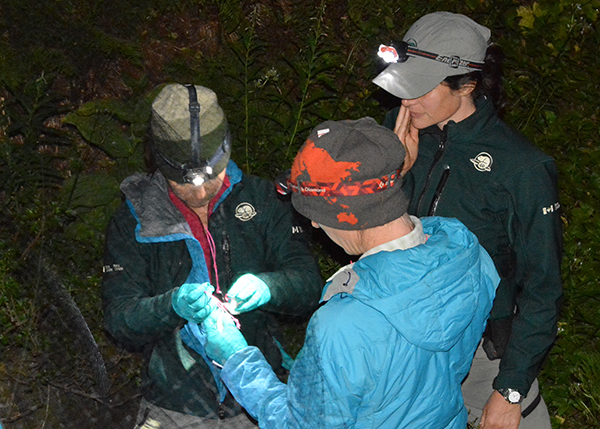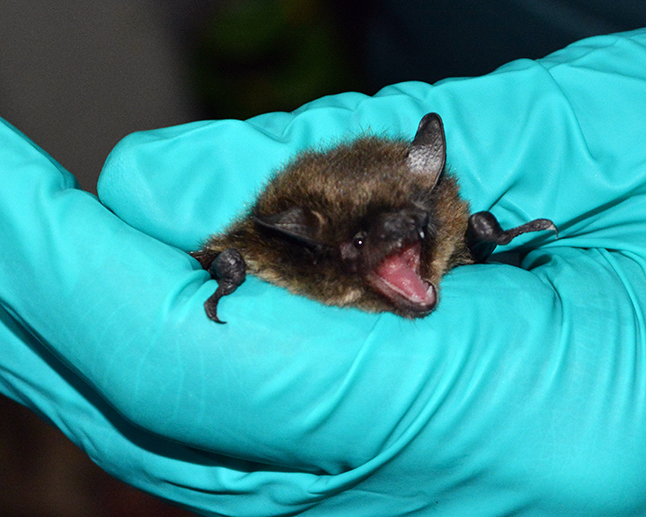By David F. Rooney
Initial work in Glacier National Park shows that the deadly White Nose Syndrome fungus that has killed between six and eight million bats in eastern North America has not yet made it to Glacier National Park’s Nakimu Cave.
Ecologist Sarah Boyle said Thursday that bats captured in mist nets she and other Parks scientists erected in the park show that the resident Little Brown Bat population is healthy.
“They were all in very good shape with beautiful fur and feisty — very feisty! — attitudes,” she said in a brief telephone interview from Vancouver.
Bats are enormously important pollinators and pest control specialists and their potential loss to this lethal fungus is a major concern provincially and nationally. WNS is spread by both infected bats and by cavers who may have unwittingly visited a contaminated cave and then tracked the fungal spores into new and previously uncontaminated caves. As it became apparent a few years ago that WNS was decimating bat populations in the East, Parks Canada decided to find out just what kind of resident bat populations were using the high-altitude Nakimu cave system.
Acoustic monitors set up in the caves have recorded the calls of a number of different species, including the Long-Legged Myotis but the only ones that have so-far been physically captured in the mist nets this summer are the Little Brown Bats.
Boyle said that in order to protect species like the Little Brown Bat, scientists need to know, first, if WNS is in the caves and, second, what bats use the caves, particularly as winter roosts called hibernacula where they can safely hibernate during the winter. Those hibernacula are where most of the bat deaths have occurred in the East.
The Nakimu Cave’s potential usage by bats is not necessarily as obvious as you might think. The guano deposits that might normally be a clue as to the caves’ usage by bat populations are frequently washed away by melting snow every spring. So no one is certain if bats use it as a hibernacula.
Mini data loggers were also installed to record humidity and temperature as some bat species prefer to hibernate or roost in caves that are humid and above 0° Celsius. The data collected will be used to establish base-line data on cave conditions.
Here is a small selection of photos of Parks staff at work on this important bat survey:






